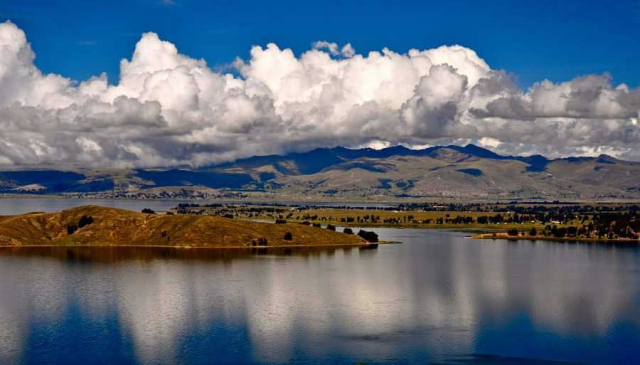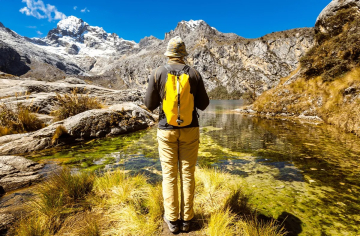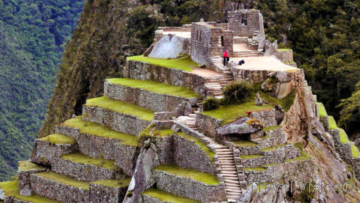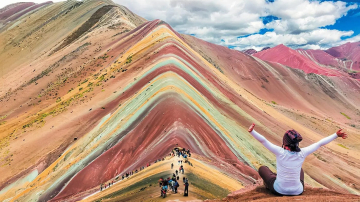Located at more than 3,800 meters above sea level, Lake Titicaca is the highest navigable lake in the world and one of the natural and cultural jewels of South America. Shared between Peru and Bolivia , this imposing body of water is considered the cradle of Andean civilization and is surrounded by myths, traditions and impressive landscapes.
More than just a tourist destination, Lake Titicaca is home to communities that have preserved their ancestral way of life. Its islands, such as the floating Uros or the culturally rich Taquile , offer a unique experience for those looking to immerse themselves in the living history of the Andes. Below, we present everything you need to know to plan your visit to this magical place.
1. How to get to Lake Titicaca
The main access to Lake Titicaca on the Peruvian side is the city of Puno , known as the folkloric capital of Peru. To get to Puno, there are several options:
-
From Lima: You can take a direct flight to the city of Juliaca , located 44 km from Puno. From there, a land transfer of approximately one hour will take you to the lake city.
-
From Cusco: The most popular option is the luxury tourist train ride with PeruRail Titicaca Train , which offers spectacular views of the Andes. There are also tourist buses with stops at archaeological sites along the route.
-
From Arequipa: You can take a direct bus to Puno , with a journey time of approximately six hours.
2. Islands of Lake Titicaca: must-see places
Lake Titicaca is home to several islands that offer unique experiences for visitors. Among the most notable are :
-
Uros Floating Islands: Built from totora reeds, these artificial islands are home to the Uro people , who have maintained their traditions for centuries . A visit here allows you to learn about their way of life , tour their islands and learn about the construction of their boats and homes.
-
Taquile Island: Known for its textile industry, declared Intangible Cultural Heritage of Humanity by UNESCO , this island offers an authentic experience with a community that preserves its culture and traditions.
-
Amantaní Island: Unlike Taquile , Amantaní allows you to stay overnight in the homes of local families , providing a complete cultural immersion. In addition, you can visit its pre-Incan temples dedicated to Pachamama and Pachatata.
-
Suasi Island: It is a private island with an exclusive eco-lodge that allows for a more relaxing experience and connection with nature.
3. Activities and experiences on Lake Titicaca
Beyond visiting the islands, Lake Titicaca offers various experiences for travelers:
-
Sailing in a traditional totora boat.
-
Hiking in Taquile and Amantaní to enjoy spectacular panoramic views of the lake.
-
Participate in Andean rituals that local communities still practice, such as payments to Pachamama.
-
Explore the Capachica Peninsula , a less touristy alternative but with impressive landscapes.
-
Visit Sillustani , an archaeological complex with impressive chullpas (funerary towers) of the Kolla culture , located near Puno.
4. Tips for your visit to Lake Titicaca
-
Acclimatization: Due to the altitude, it is advisable to spend a couple of days in Cusco or Arequipa before traveling to Puno to avoid altitude sickness.
-
Appropriate clothing: Bring warm clothing, as temperatures can drop significantly at night.
-
Respect for local communities: When visiting the islands, it is important to follow community rules , ask permission before taking photos , and purchase handicrafts to support the local economy.
-
Book tours with responsible agencies: There are several options for exploring Lake Titicaca , but it is key to choose operators that work sustainably with the communities.
5. Gastronomy in Puno and Lake Titicaca
The gastronomy of the region is a delight that you cannot miss. Some typical dishes include:
-
Fried trout: Freshly caught from the lake and served with potatoes and salad.
-
Quinoa soup: A nutritious soup made with quinoa, vegetables and beef or chicken.
-
Huatia: A traditional Andean dish where potatoes and meat are cooked underground with hot stones.
-
Calapurca: A hot soup with meat and potatoes that is served with a glowing stone inside to keep it warm.
In Puno, restaurants like Mojsa and La Casona offer an excellent opportunity to try these local flavors.
Visiting Lake Titicaca is much more than just a walk around a lake; it is a cultural and natural experience that leaves an indelible mark on every traveler. From the vibrant city of Puno to the islands that keep ancestral traditions alive , this destination offers a unique connection with the history and beauty of the Peruvian Andes.
Whether you're exploring the floating islands of the Uros , marvelling at the hospitality of the inhabitants of Taquile and Amantaní, or enjoying a sunrise over the lake , every moment on Titicaca is an opportunity to immerse yourself in a fascinating world. Get ready to live an unforgettable experience on the highest lake in the world, where culture and nature merge in a dreamlike landscape.
We invite you to learn more about Peru here: Blogs from Peru.




